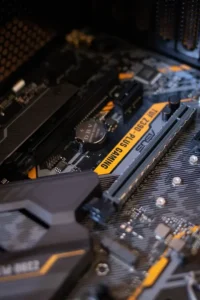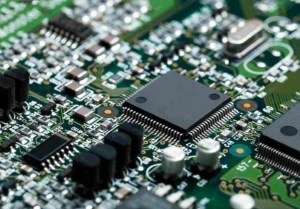SOP vs POS
The sum of products (SOP) and product of sums (SOP) are two forms of canonical expressions. A Boolean expression with either a min term or a max term can be characterised as a canonical expression. If we have two variables, X and Y, the canonical expression including min terms will be XY+X’Y’, whereas the canonical expression containing max terms will be (X+Y) (X’+Y’). This article deals with the terms POS and SOP and the difference between them i.e; SOP vs POS.
What is SOP?
The acronym SOP stands for “sum of products.” The sum of Products form is used to write a Boolean expression using product words. Min-terms are another name for product terms.
What is POS?
The acronym POS stands for “Product of Sums.” The Product of the Sum form is used to write a Boolean statement using sum terms. The sum terms are also known as max-terms.
What is the Difference Between SOP and POS?
The fundamental distinction between SOP and POS is that SOP uses minterms or product terms to describe a Boolean statement, whereas POS uses maxterms or sum terms to represent a Boolean expression.
The distinction between SOP and POS is that in SOP, we write the product terms for each input combination that produces a high (1) output. In POS, on the other hand, the sum terms for each input combination that produces a low (0) output are written.
SOP vs POS: minterms and maxterms
Another distinction between SOP and POS is that in SOP, while writing the minterms, the input variables are used if the value is 1, but the complement of the variable is used if the value is 0. In POS, we accept the input variables if the value is 0, but we write the variable’s complement if the value is 1.
SOP vs POS in case of Output:
Another distinction between SOP and POS in the VLSI design course is that in SOP, the final expression is obtained by adding the relevant product terms, but in POS, the final expression is obtained by multiplying the appropriate sum terms.
Why do we favour SOP over POS when developing a digital circuit?
We choose NAND-based semiconductors over NOR-based chips because the NAND gate takes up less space chip area during manufacturing] than the NOR gate, even though they both need the same number of CMOS transistors.
We favour NAND-based circuits because we want to build chips that take up less space and run at a high speed. As a result, we naturally select SOP – Sum Of Products, as it is the most straightforward design technique for designing a digital circuit with a NAND gate.
To build any circuit and manufacture the device, we merely use universal logic gates NAND and NOR.
In general, when designing digital circuits with NAND gates, we use SOP and when designing digital circuits with NOR gates, we select POS – Product Of Sums. We can transform any historical NOR circuit into a NAND circuit using POS to SOP conversion and vice versa if we wish to use them as part of NAND chips.
In addition, we often use SOP to design the circuit for positive logic-defined functionality and POS to build the circuit for negative logic-defined functionality. This is why we have two alternatives for designing digital circuits: SOP and POS.
Boolean expressions can be represented in two ways: SOP and POS. The fundamental distinction between SOP and POS is that SOP uses terms or product terms to describe a Boolean statement, whereas POS uses max terms or sum terms to represent a Boolean expression.
Conclusion:
Taking a VLSI course from ChipEdge will equip you with all the necessary skills you need to get a good job. Being one of the best VLSI Training institute, ChipEdge offers several courses for getting VLSI Jobs along with current VLSI job openings in leading semiconductor companies in India. ChipEdge uses the greatest Synopsys tools to provide you with all of the essential information and walks you through all of the available jobs in one easy spot.














